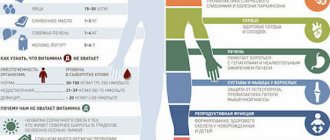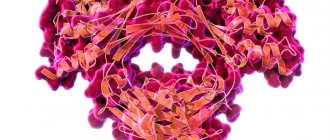Does a blood test give an accurate picture of AMH?
Yes, an AMH blood test gives an accurate picture of your ovarian reserve. This blood test is simple and can be taken on any day of the menstrual cycle. But pay attention to such a factor as the reliability of a single study of AMH levels. There is a possibility that the analysis was performed incorrectly. If a study once showed a low (or vice versa, high) AMH indicator, this is not an unambiguous confirmation of female potential or its absence. When there is a discrepancy between the set of factors that determine ovarian reserve, we adhere to the need to retake the analysis.
Reasons for the decrease in anti-Mullerian hormone in the blood
Among women:
- Age-related decrease in ovarian reserve.
- Ovarian failure (including after chemotherapy).
- Obesity.
For men:
- During puberty - premature sexual development.
- Increased androgen levels.
- Anorchism (developmental anomaly manifested by the complete absence of testicles).
- Non-obstructive azoospermia (lack of sperm in semen due to impaired sperm formation).
Sources:
- Stamatina Iliodromiti, Richard A. Anderson, and Scott M. Nelson. Technical and performance characteristics of anti-Müllerian hormone and antral follicle count as biomarkers of ovarian response. Human Reproduction Update, Vol.21, No.6 pp. 698–710, 2015.
- C. Gnoth. Das Anti-Müller-Hormon. Ein Blick auf die biologische Uhr? Gynäkologische Endokrinologie 2011, 9:238–246.
- Streuli I, Fraisse T, Pillet C et al. Serum antimullerian hormone levels remain stable throughout the menstrual cycle and after oral or vaginal administration of synthetic sex steroids. Fertil Steril 90:395–400, 2008.
- Jure Bedenk, Eda Vrtačnik-Bokal, Irma Virant-Klun. The role of anti-Müllerian hormone (AMH) in ovarian disease and infertility. J Assist Reprod Genet. 2021 Jan; 37(1):89-100.
Is AMH a reliable marker of pregnancy during IVF?
Partially. The number of oocytes is directly related to the woman's age. It is the woman’s age that is the main factor in reproductive success, including the frequency of pregnancy in the ART cycle. However, we must not forget about the quality of the eggs! If, against the background of a reduced level of AMH, a diagnosis of infertility is made, then you need to think not about increasing the amount of this hormone in the blood, but about how to stimulate the ovaries to produce healthy eggs.
Anti-Mullerian hormone ensures sex differentiation in the embryo, and is also involved in spermatogenesis and follicle maturation. It serves as an indicator of the function of the gonads, and is used to find out the cause of impaired sex differentiation, male and female infertility, as well as in the diagnosis of certain tumors.
Synonyms Russian
AMH, Mullerian inhibitory substance.
English synonyms
Anti-Müllerian hormone, AMH, Müllerian inhibiting factor, MIF, Müllerian-inhibiting hormone, MIH, Müllerian-inhibiting substance, MIS.
Research method
Chemiluminescent immunoassay.
Units
ng/ml (nanograms per milliliter).
What biomaterial can be used for research?
Venous blood.
How to properly prepare for research?
- Do not eat for 12 hours before the test.
- Avoid taking estrogens and androgens for 48 hours before the test.
- Do not smoke for 30 minutes before the test.
General information about the study
Anti-Müllerian hormone (AMH) is normally synthesized only by the Sertoli cells of the testes (both during embryonic development and after birth) and granular cells of the ovaries (only after birth). It gets its name from its unique property of preventing the development of female reproductive structures from a germ called the Müllerian duct. Although the sex of the child is determined at the time of conception, until the 6th week of pregnancy the fetus has undifferentiated sex gonads and the rudiments of the internal reproductive structures of both sexes: the mesonephritic duct (Wolfow) and the paramesonephritic duct (Müllerian). Initially, the fetus develops according to the female type. At the same time, the Müllerian duct stimulates the development of the uterus, fallopian tubes and upper part of the vagina, and the cells of the Wolffian duct are destroyed. Conversely, in the presence of suppressive factors, the Müllerian duct is destroyed, and the Wolffian duct gives rise to the epididymis, vas deferens and seminal vesicles - thus, the development of the reproductive system occurs according to the male type. One of these factors, which ultimately determines the anatomical male gender of the child, is anti-Mullerian hormone. It is produced by the Sertoli cells of the testicle from about the 7th week of embryonic development. Its main function is to suppress the formation of female reproductive structures from the Müllerian duct. If a genetically male fetus has mutations in the anti-Müllerian hormone gene or mutations in its receptor gene, then the development of the Müllerian duct continues and, along with the internal male reproductive structures, female reproductive structures (uterus, fallopian tubes or cervix) are also formed. In this case, the child has normally developed testicles, internal male reproductive structures (epididydymis, vas deferens and seminal vesicles) and external male genital organs; sex at birth is determined to be male and it is not possible to suspect a developmental anomaly.
Another important function of the AMH is the descent of the testicles from the abdominal cavity into the scrotum. If AMH is abnormal, testicular descent is impaired. Delayed descent of the testicles (cryptorchidism) is the most common pathology of the genitourinary system in boys, it occurs in 30% of premature and 5% of full-term children. As a rule, testicular descent still occurs spontaneously by the 3rd month of life. If this does not happen by 6 months, surgery is performed to move the testicles from the abdominal cavity or inguinal canal to the scrotum (orchidopexy). Most patients with AMH deficiency or insensitivity have cryptorchidism and are considered for such surgery. It is often during orchidopexy that additional internal female reproductive structures are discovered and persistent Müllerian duct syndrome is suspected. In addition to anatomical defects that increase the likelihood of inguinal hernia in children, this syndrome is associated with infertility.
Doctors observing a boy with cryptorchidism face certain difficulties. This pathology can occur both in cases of impaired testicular descent and in their absence. These deviations have completely different prognosis and treatment, so their correct differential diagnosis is necessary. Ultrasound can detect testicular tissue in the abdominal cavity or inguinal canal only in 70-80% of cases, while AMH is a specific (98%) and sensitive (91%) indicator of the presence of testicular tissue. A positive test for AMH in a boy indicates an abnormal descent of the testicles, which can be corrected with surgery. The absence of AMH makes it possible to diagnose anorchia (congenital bilateral absence of testicles), in which surgery is not indicated. In this regard, AMH measurement can be used for the differential diagnosis of cryptorchidism.
AMH concentrations vary significantly throughout life. A boy's AMH level is low at birth, but increases significantly by 6 months. During childhood and adolescence, AMH gradually decreases and reaches its lowest values in adulthood. Unlike newborn boys, the level of AMH in female infants is normally very low (undetectable) and remains so in childhood and adolescence. During puberty in girls, it increases slightly and throughout adult life corresponds to that in adult men. AMH levels are not normally detected after menopause. Thus, AMH concentrations in boys and girls during the neonatal period and early childhood are significantly different, so AMH can be used to diagnose syndromes of impaired sex differentiation. If an infant has external genital structures that have both female and male characteristics, AMH in combination with some other indicators allows not only to determine the true sex, but also to identify the cause of impaired sex differentiation. For example, isolated dysfunction of testosterone-producing Leydig cells is accompanied by underdevelopment of the external male genitalia, while the concentration of AMH synthesized by Sertoli cells remains normal. On the contrary, underdevelopment of the external male genitalia, resulting from underdevelopment of the testes, accompanied by loss of both Sertoli and Leydig cells, is characterized by a low AMH value. In newborn girls, the level of AMH is very low (undetectable). In this regard, an AMH test can be used to diagnose sex differentiation disorders and identify its cause.
Despite the fact that the main function of AMH is realized during the development of the embryo, this hormone carries out a number of tasks after birth. In the body of an adult man, it is involved in the regulation of androgen synthesis. Serum AMH levels in men with non-obstructive azoospermia (lack of sperm in the ejaculate due to impaired sperm formation) are 50% lower than in patients with obstructive azoospermia (lack of sperm in the ejaculate due to an obstruction in the vas deferens). This laboratory indicator is an even more accurate method of differential diagnosis of two types of azoospermia than the traditionally used follicle-stimulating hormone (FSH) test, so AMH can be used to identify the cause of male infertility.
In a woman’s body, AMH is involved in the maturation of follicles, as well as their selection for ovulation. It is synthesized by granule cells of growing follicles, inhibits the growth of neighboring primordial follicles, and also reduces the sensitivity of growing follicles to the action of FSH. All this contributes to the final maturation and ovulation of one follicle every month. Since AMH is synthesized by growing follicles, their quantity is assessed by its concentration. In turn, the number of growing follicles reflects the number of resting primordial follicles, which are called the functional ovarian reserve. This reserve decreases with age, as well as in conditions accompanied by premature menopause (for example, chemotherapy). Assessing functional reserve using AMG allows you to answer many questions. Quite often, modern women deliberately postpone having a child. It has been proven that the probability of conceiving a first child within 1 year for a woman over 31 years of age decreases by 6 times compared to younger women. By the age of 41, quantitative and qualitative changes in the follicles in the vast majority of cases lead to so-called natural infertility, and it occurs much earlier than menopause. Therefore, assessing the functional reserve of the ovaries makes it possible to determine the approximate age of menopause and infertility (infertility), which can be taken into account by young women when planning pregnancy. Low AMH levels indicate the onset of menopause within the next 5 years. The advantages of the AMH test are that the concentration of this hormone does not change significantly during the menstrual cycle and also remains constant from one cycle to the next.
Assessment of the functional reserve of the ovaries using AMH is also carried out when selecting and preparing patients for in vitro fertilization programs for the treatment of female infertility. Patients with insufficient functional ovarian reserve and reduced AMH respond worse to ovulation stimulation, and pregnancy occurs less frequently. On the other hand, AMH is used to assess the risk of overstimulation of ovulation. Not only is it accompanied by abdominal discomfort and the production of more defective eggs, but it can also lead to a life-threatening condition - ovarian hyperstimulation syndrome. AMH makes it possible to identify patients with a high risk of excessive stimulation of ovulation, which is necessary for further selection of the optimal infertility treatment regimen.
AMH is a marker for ovarian tumors originating from granular cells (granulosa cell tumors). They account for about 3% of ovarian neoplasms. The so-called adult variant of the tumor is more common, observed in pre- and postmenopausal women (the average age at which the tumor is diagnosed is 51 years). At the same time, along with increased production of AMH, the amount of estrogens significantly increases, which leads to endometrial hyperplasia, which is manifested by menstrual irregularities in the premenopausal period. In postmenopausal women, hyperestrogenism most often manifests itself as uterine bleeding or endometrial adenocarcinoma. In men, excess estrogen is accompanied by gynecomastia. Other rare hormonally active ovarian tumors include Sertoli cell tumors. In both cases, AMH levels will be significantly elevated.
Repeated AMH tests can be used to monitor tumor treatment.
What is the research used for?
- For differential diagnosis of the causes of cryptorchidism: delayed testicular descent or anorchia (as well as persistent Müllerian duct syndrome).
- To diagnose disorders of sex differentiation and identify its causes.
- To diagnose non-obstructive azoospermia as a cause of male infertility.
- To assess the functional reserve of the ovaries for the purpose of planning pregnancy and predicting the onset of menopause.
- To identify groups of patients with insufficient or excessive response to stimulation of ovulation during in vitro fertilization programs and correction of treatment of female infertility.
- For the diagnosis of granulosa cell tumors of the ovaries and testes and monitoring their treatment, as well as for the diagnosis of neoplasms from Sertoli cells.
When is the study scheduled?
- With cryptorchidism - the absence of testicles in the scrotum of a newborn boy.
- If a newborn has external genital structures that have both female and male characteristics.
- In the differential diagnosis of obstructive and non-obstructive azoospermia.
- When is the age at which infertility and menopause are predicted?
- When identifying groups of patients: a) with an insufficient response to ovulation stimulation and an unfavorable prognosis for pregnancy; b) with an excessive response to ovulation stimulation and an unfavorable prognosis for the development of ovarian hyperstimulation syndrome.
- For symptoms of hyperestrogenism in women (uterine bleeding) and men (gynecomastia).
What do the results mean?
Reference values
| Floor | Age (years) / Tanner stage | Reference values, ng / ml |
| Male | Stage 1 | 4,95 — 144,48 |
| Stage 2 | 5,02 — 140,06 | |
| Stage 3 | 2,61 — 75,9 | |
| Stage 4 | 0,43 — 20,14 | |
| Stage 5 | 1,95 — 21,2 | |
| > 18 | 0,73 — 16,05 | |
| Female | 18-26 | 0,96 — 13,34 |
| 26-31 | 0,17 — 7,37 | |
| 31-36 | 0,07 — 7,35 | |
| 36-41 | 0,03 — 7,15 | |
| 41-46 | 0 — 3,27 | |
| > 46 | 0 — 1,15 |
For females: AMH values
Reasons for increased levels of anti-Mullerian hormone:
- polycystic ovary syndrome;
- hormonally active tumors of the testicles and ovaries.
Reasons for decreased levels of anti-Mullerian hormone:
- menopause;
- low functional reserve of the ovaries;
- anorchia and testicular dysgenesis;
- persistent Müllerian duct syndrome.
What can influence the result?
Patient's age and gender.
Normal values in men
| Age | Normal values, ng/ml |
| First two weeks | 32 ± 8.3 ng/ml |
| Up to a year | 65.1 ± 13.0 ng/ml |
| Up to four years | 69.9 ± 9.2 ng/ml |
| Up to seven years | 61.3 ± 8.4 ng/ml |
| Up to nine years | 47.0 ± 6.6 ng/ml |
| Teenage years | 34.9 ± 3.7 ng/ml |
| Adult men | 4.2 ± 0.6 ng/ml |
Normal indicators in women
As menopause approaches, the concentration of AMH decreases to zero.
| Age | Normal values, ng/ml |
| Girls up to 9-10 | 1,8-3,4 |
| 10-20 (beginning of reproductive age) | 2,1-6,8 |
| 20-30 (maximum fertility) | 3,2-7,3 |
| 30-45-50 (beginning of decreased fertility) | 2,6-6,8 |
| 50-55 (preparing for menopause) | 1,1-2,6 |
| Over 55 (menopause) | Up to 1.1 |
| Postmenopause | AMG within zero mark |








